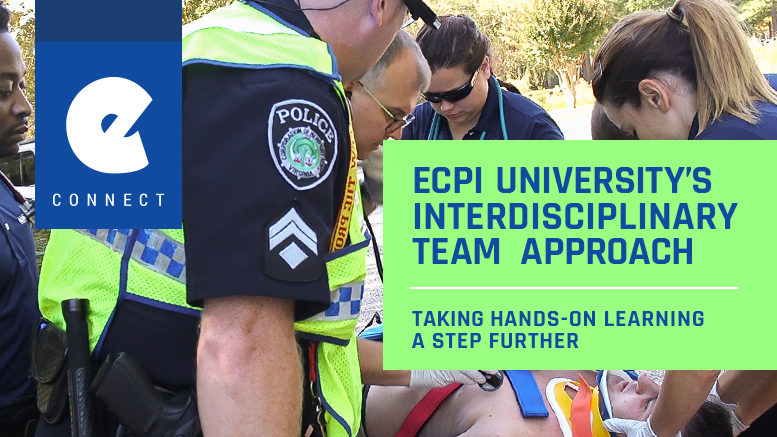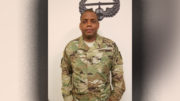Taking Hands-On Learning a Step Further
Since it was founded more than 50 years ago, ECPI University has been a leader in hands-on education. Here, students learn by doing. While there are classroom lectures, they are typically more dynamic and involve student-teacher interaction. Students then apply what they learn, and in doing so, have a much better chance of not just understanding the material, but retaining it for future use.
A recent study reinforces what ECPI University educators have long known. Published by the Proceedings of the National Academy of Sciences in the United States, it found that undergraduate students in classes with traditional stand-and-deliver lectures are 1.5 times more likely to fail than students in classes that use more stimulating, active learning methods.
ECPI University‘s learning environment often involves life-like simulations and exercises. Using simulation technology, ECPI faculty members try to create an environment that is as close to the real world as possible. Taking this approach a step further, they also develop learning opportunities that integrate multiple disciplines within the university.
[Tweet “Undergraduate students in classes with traditional stand-and-deliver lectures are 1.5 times more likely to fail than students in classes that use more stimulating, active learning methods”]
Known as the “Interdisciplinary Team Approach,” it gives students a broader view of the career path they’ve chosen and immerses them in more lifelike learning exercises. In one particular scenario, health science students are taken through a simulated car accident involving a driver and his pregnant wife. EMTs arrive, and a process begins that incorporates participation between paramedic, nursing, physical therapy, and health information students.
“Health care today is interdisciplinary, thus our programs reflect that,” says ECPI University Vice President of Academic Affairs Dr. Kat Prince. “Caring for patients requires a coordinated team effort of people from different disciplines. For example, the EMT cares for the patient in the field, then hands off the patient to the care team at the hospital. The care team may be comprised of professionals from many different healthcare fields – nurses, physical therapists, respiratory therapists, etc. Our academic programs reflect what is actually happening in the real world of health care.”
There have been multiple studies published, primarily in the ICU setting, that show when there is a multifaceted team approach to care, patient outcomes improve. An article in the June 2010 AMA Journal of Ethics found that, contrary to team approaches, ‘‘in a hierarchical hospital organization, hospital personnel tended to interact only with members of their own group (leading to) limited intergroup communication and the disruption of professional relationships.’’
[Tweet ““Health care today is interdisciplinary, thus our programs reflect that,” says ECPI University Vice President of Academic Affairs Dr. Kat Prince”]
Another study by William A. Knaus in the Canadian Critical Care Nursing Journal compared various organizational characteristics and patient outcomes of 13 intensive care units and discovered a direct correlation between patient outcomes and inter-professional communication. The better the communication, the better teamwork. The better the teamwork, the better the outcomes.
“These studies highlight that a multifaceted team approach is necessary to facilitate effective relationships among healthcare professionals and to optimize patient care,” says ECPI University EMS Program Director Nicholas Klimenko. “All ECPI University health care program graduates are expected to function effectively in a multidiscipline, fully-integrated healthcare system.”
To improve understanding of each disciplines’ roles and responsibilities within the healthcare system, ECPI University uses high-fidelity simulation and case studies to bring students from each program together at multiple points throughout their education. The idea is to improve familiarity and communication. With improved communication, teamwork will improve; with improved teamwork, the students will be better prepared to function in a multidiscipline, integrated healthcare system upon graduation.
“In this exercise we began with a motor vehicle collision where students from Criminal Justice and EMS responded,” says Mr. Klimenko. “EMS communicated with medical control and delivered the patients to nursing. Nursing functioned as they would in the emergency department and sent the patients for diagnostic studies with radiography and sonography. Nursing again was involved in labor and delivery. Physical therapy was involved with post discharge rehabilitation. Health information management processed the patient’s information throughout. This represents learning at its best.”








Be the first to comment on "Interdisciplinary Approach to Educations Sets ECPI University Apart from the Rest"